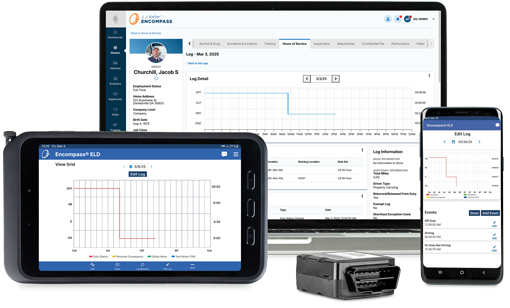Sr. Industry Business Advisor — J. J. Keller & Associates, Inc.
Auditing Your Short-Haul Logging Records
Read our 3-step process for uncovering non-compliance events in short-haul logging records.
Published On: 10/09/2020


Written by:
Tom Bray
Assuming your log auditor understands the hours-of-service (HOS) regulations in Part 395, and in particular, the form and manner requirements and the limits in §395.3, they can use the tips below for auditing your short-haul (sometimes referred to as exempt) logging records.
Ideally, it’s wise to automate hours-of-service recordkeeping by having drivers use an electronic logging device (ELD) that supports exempt logging. Use of ELDs can ease the burden of log auditors and makes driver’s available hours visible to all stakeholders (like dispatch and payroll), which is especially helpful if you have regulated and non-regulated drivers.
Use the log audit process below to uncover any non-compliance events in short-haul logging records.
Short-Haul Log Auditing Process
1. Check that there is a time record that clearly identifies the driver and contains the driver’s starting time, ending time, and total on-duty hours on file for the day.
- Drivers that generally work as short-haul drivers do not have to submit time records for their off-duty days unless the carrier requires it. If there is no time record for a given day, use dispatch, trip, and payroll records to verify the driver was off for the day.
2. Verify that the driver is qualified for the use of the exemption.
- A driver operating a CDL-required vehicle: Using supporting documents* verify that the driver:
- Stayed within 150 air-miles of the work reporting location, and
- Returned to the work reporting location for the day and was released from duty within 14 consecutive hours.
- A driver operating a vehicle that does not require a CDL: Using supporting documents* verify the driver:
- Stayed within 150 air-miles of the work reporting location, and
- Returned to the work reporting location and was done driving within 14 consecutive hours on 5 of the last 7 days, and no more than 16 hours on up to 2 of the last 7 days.
- If the driver did not qualify for the exemption, document a violation for no log when required (§395.8), either electronic or paper (paper only if an ELD exemption applies to the driver).
3. Check for false time records.
- Using supporting documents* verify that all driver activities took place within the times indicated on the time record.
- If any supporting document shows the driver working outside of the hours listed on the time record, consider the time record to be false and document the violation (§395.8(e)).
- If the falsification created a situation where the driver should have submitted a log, document the violation as no log when required (§395.8(a)).
*Supporting documents include dispatch records, trip records/reports, payroll records, electronic communication and tracking records, and receipts.
For more guidance on auditing logs - including ELD and paper logs - download our new whitepaper entitled DIY Log Auditing: Step-by-Step Procedures for Reducing Your Risk.
You may also enjoy the following articles:
Sign up for our newsletter!
We'll help you stay on top of regulations, best practices, and fleet industry news. Sign up to receive a monthly email notification with links to our most recent blog articles, free resources, and event invites.
